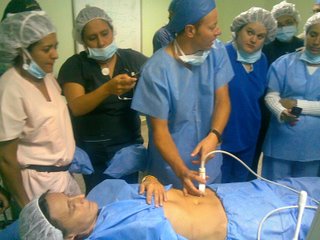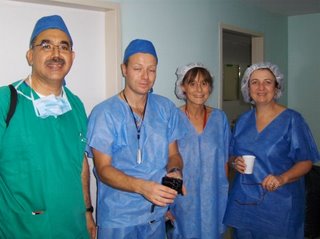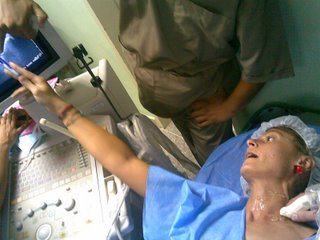
Bajo el patrocinio del Capítulo de Anestesia Pediátrica de la Sociedad Venezolana de Anestesilogía, coordinado en conjunto con el Postgrado de Anestesiología del Hospital Central de Maracay, el 18 y 19 de este mes recibimos en nuestra ciudad la visita los anestesiólogos: Belén de José María, del Hospital Sant Joan de Dèu, de Barcelona España; y de Luc Tielens, del Hospital Sint Radboud Ziekenhuis, Nijmegen Holanda, y Mirén Viteri,
del Hospital J.M. de los Rios de Caracas. Donde en conjunto los residentes del postgrado de Anestesiología del Hospital Central de Maracay con los anestesiólogos del Hospital Militar y otros anestesiólogos invitados, se hizo un taller de anestesia regional en niños y un taller de reanimación neonatal. Nueva e interesante información científica aportaron a nuestra comunidad los distinguidos visitantes, lo cual resultará en una mejor atención a nuestros pacientes pediátricos, así como la apertura de nuevos campos en la investigación clínica. Los invitados demostraron todo su desprendimiento, humildad y sabiduría al hacer excelentes demostraciones y servir de voluntarios para las mismas. Quedamos altamente agradecidos con Maria y Luc, sin dejar por fuera a Mirén por haber estado con nosotros en esta nuestra humilde casa La Ciudad de Maracay, Estado Aragua, Venezuela.
Comentarios:
Miguel A. Silva B. MD,
Médico Anestesiólogo,
Coordinador del Postgrado de Anestesilogía del Hospital Central de Maracay.
* Todas las imagenes de los tres ultimos Post. son de la demostración de tan distinguidos colegas.






